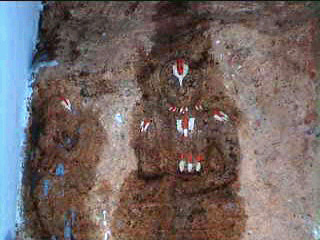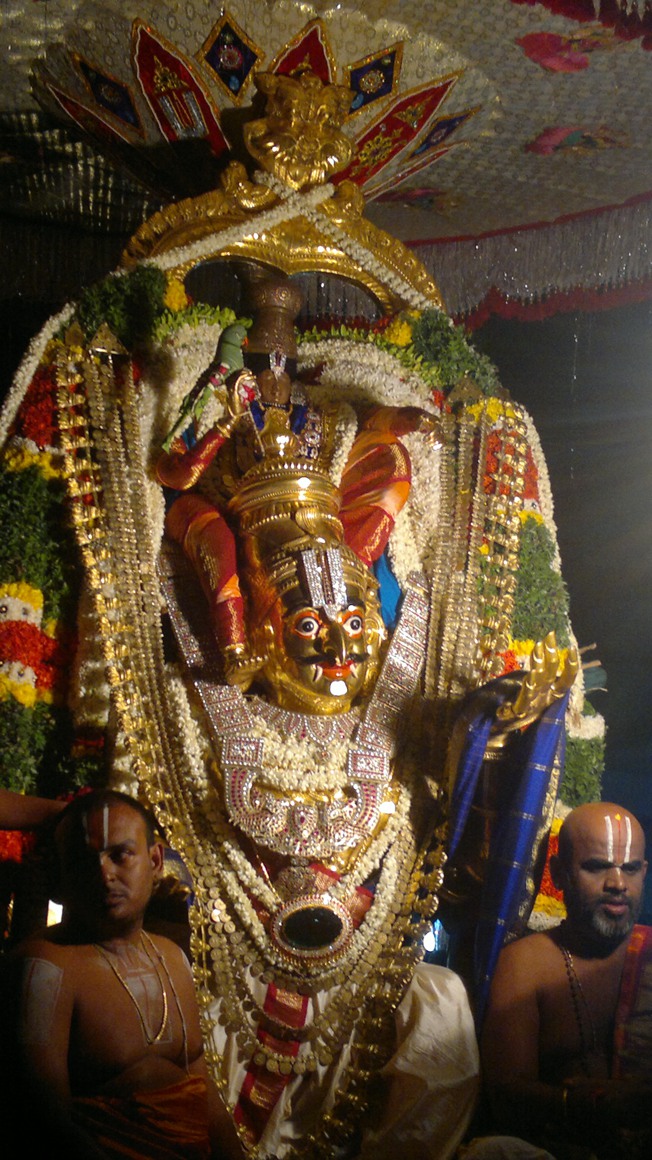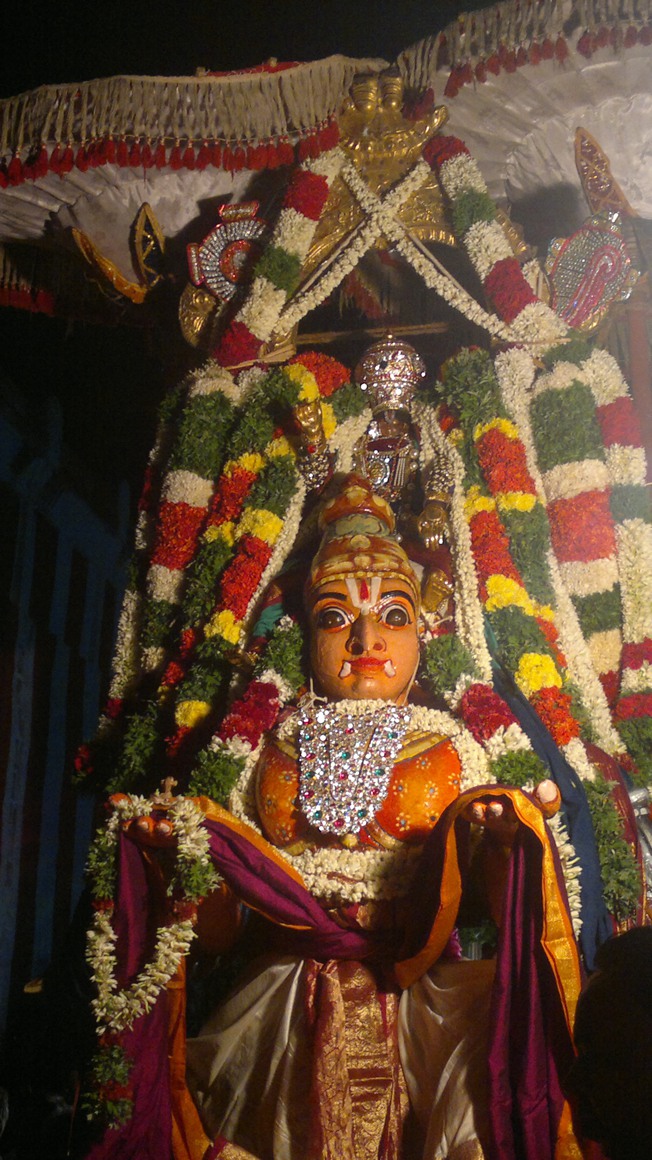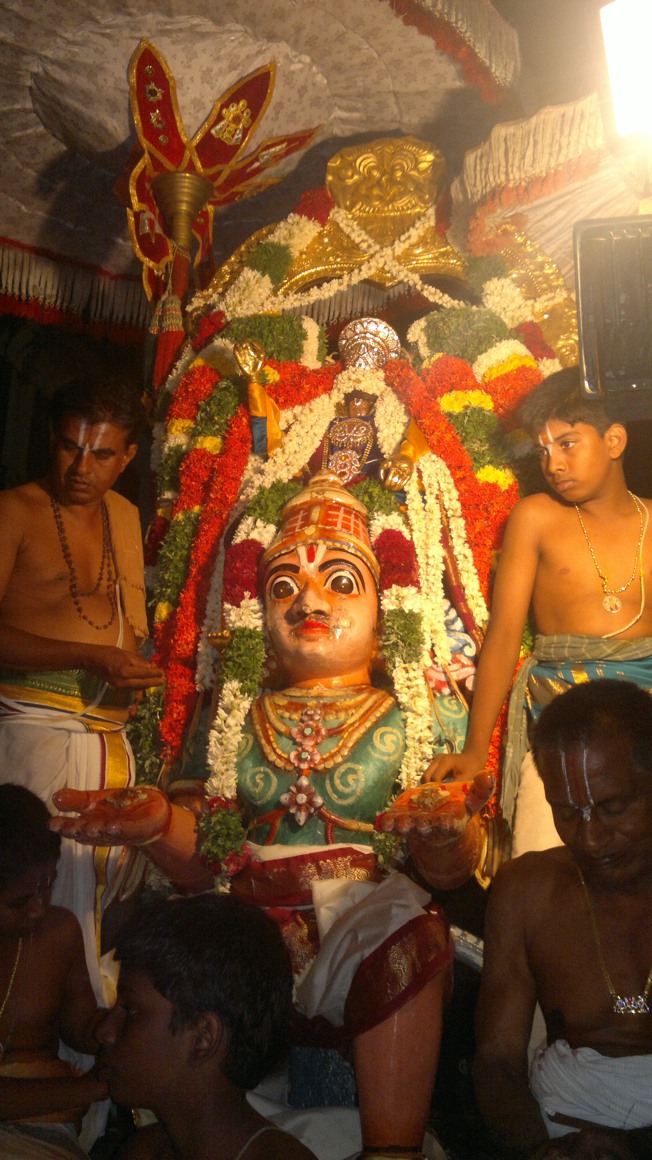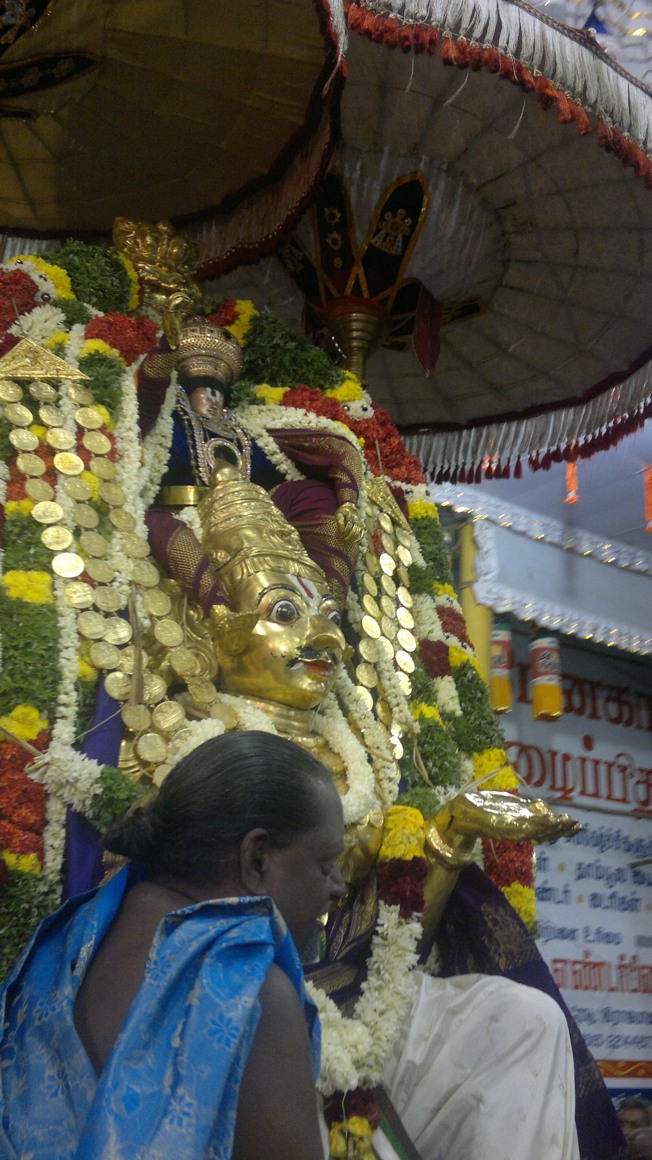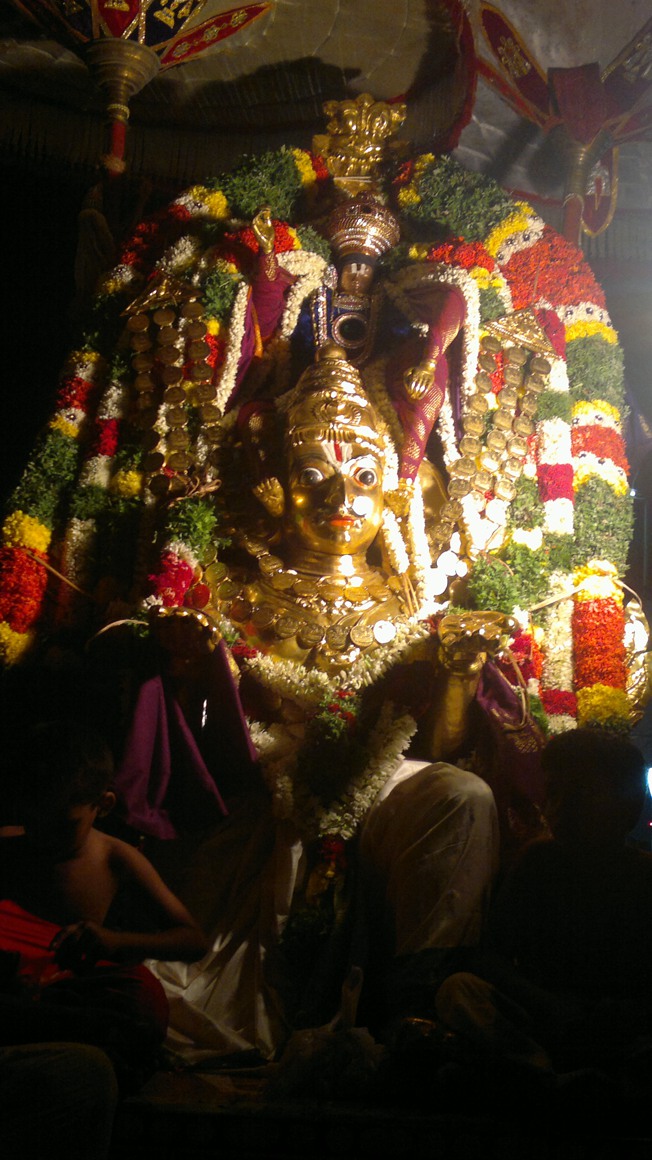We are at the river Dakshina Sindhu in Thirukkurungudi. Bathing ghat of this river is called Thirupparkadal. In the temple on the banks here, the Lord is called Thirupparkadal Nambi or Ksheerabdi Poorna Nathan in Sanskrit. Today's [13th December , 2007] lecture is from this temple. The Lord appears here as a Dwarf (Kural in Tamil), and so this place is called Thirukkurungudi. As told earlier, the Lord appears in Five places here and the Nambi in Thirupparkadal is the First. Nambi in Tamil means one full of [good] qualities. Corresponding female is called Nangai. The Lord is full of so many auspicious qualities that every devotee is totally absorbed in those qualities. Alwar says ' nambiyai, thenkurunkudi ninra achchempavala thigazhum thirumoorthiyai, umbar vanavar aadhiyen chothiyai, empirane! en solli marappeno". We will see the meaning of this pasuram and how this coincides with the 20th sloka we are to see today. Alwar gets into the Nayika bhava or assumes himself to be the sweet heart of the Lord and sings this pasuram. She [or he] is in deep love with the Lord. So, she is blabbering about the Lord and is ridiculed by her friends and neighbours. They persuade her to forget the Lord and mount accusations against the Lord and this pasuram answers every accusation. First they accuse, He has no qualities. But Alwar says Nambiyai, that is He is full of auspicious qualities. Then they charge that He is residing in the far off Vaikuntam. Alwar replies, no, He is here in Then Kurunkudi, just a stone throw distance from Alwar Thirunagari. But He is not beautiful and appears dark. Alwar says, no, He is so beautiful with lips resembling red corals and He, yes, though dark hued, is enchanting. His body is radiating brilliance. Rain bearing cloud is black, but brings happiness to all. Next, He is accused of having no illustrious status. After all He is after the Alwar and so He must be an ordinary person. Alwar refutes this by saying, He is worshiped by the Nityasooris or the gods of Vaikuntam. What a pride it is to be honoured like that! Such a great Person lowering Himself comes to the Alwar. Finally, He is accused of doing no good to Alwar. Refuting this Alwar calls Him as Piran, which means one who is always ready to help and support. So, en solli marappeno, how can she forget Him? Without seeing Him, even for a day one can not live - if this thought comes to anyone, then that one should be grateful to the Lord for having been blessed with such a quality! If we can always think of the Lord, then we will have no room for love or hatred for anything else in this world. This is the essence of this pasuram and this conveys the substance of 20th sloka:
na prahrsyet priyam prapya
nodvijet prapya capriyam
sthira-buddhir asammudho
brahma-vid brahmani sthitah
A person who neither rejoices upon achieving something pleasant nor laments upon obtaining something unpleasant, who is self-intelligent, unbewildered, and who knows the science of God, is to be understood as already situated in Transcendence.
nodvijet prapya capriyam
sthira-buddhir asammudho
brahma-vid brahmani sthitah
A person who neither rejoices upon achieving something pleasant nor laments upon obtaining something unpleasant, who is self-intelligent, unbewildered, and who knows the science of God, is to be understood as already situated in Transcendence.
"A person who neither rejoices upon achieving something pleasant nor laments upon obtaining something unpleasant, who is self-intelligent, who is unbewildered, and who knows Atman and God, has stabilized mind in it."
Brahma vid = jeevatman who has attained sama darshan and so is like the Brahman or Paramatman, brahmani sthitha = always thinking of that brahman [here Atman], sthira buddhi = unwavering knowledge [that Atman is eternal], asammudha= not thinking about the transient and destructible body. Person who has been guided by teachers about Atman's qualities and who always thinks of the greatness of Atman, attains Atman sakshatkaram. What is the eminence of such a person? Na prahrsyet = not dancing or shouting over the roof out of happiness, priyam prapya = just because he has got something to his liking, no dvijet = nor brooding over or heart broken for, apriyam ca prapya = something he got not to his liking. Because he has had Atman sakshatkaram, he is inert to anything happening be it for or against his liking. We can see that this attitude comes to us sometimes. A child likes toy, but after he has grown up same toy will not be liked by him or at least he will be indifferent to it. In cold places we may like warm clothing, but same clothes will be hated in warm places. Our likes change with time and place. Because the mind has changed. Therefore, likes for worldly matters change. By involving our mind in Atman and in God, we can avoid the so called depression, which we very frequently hear. We can steer our mind form transient and changing desires and concentrate on the eternal Atman. Atman darshan will make us not to think of anything else.
(continued)



